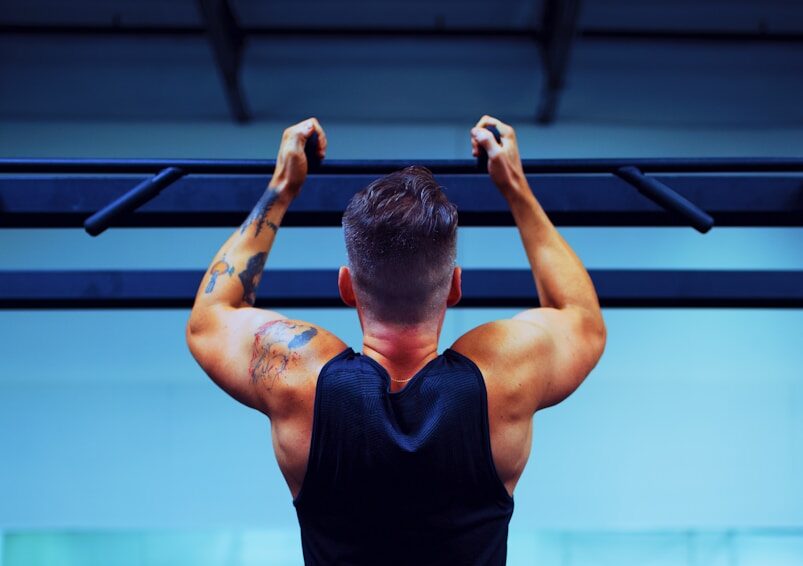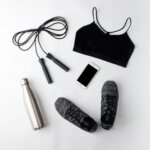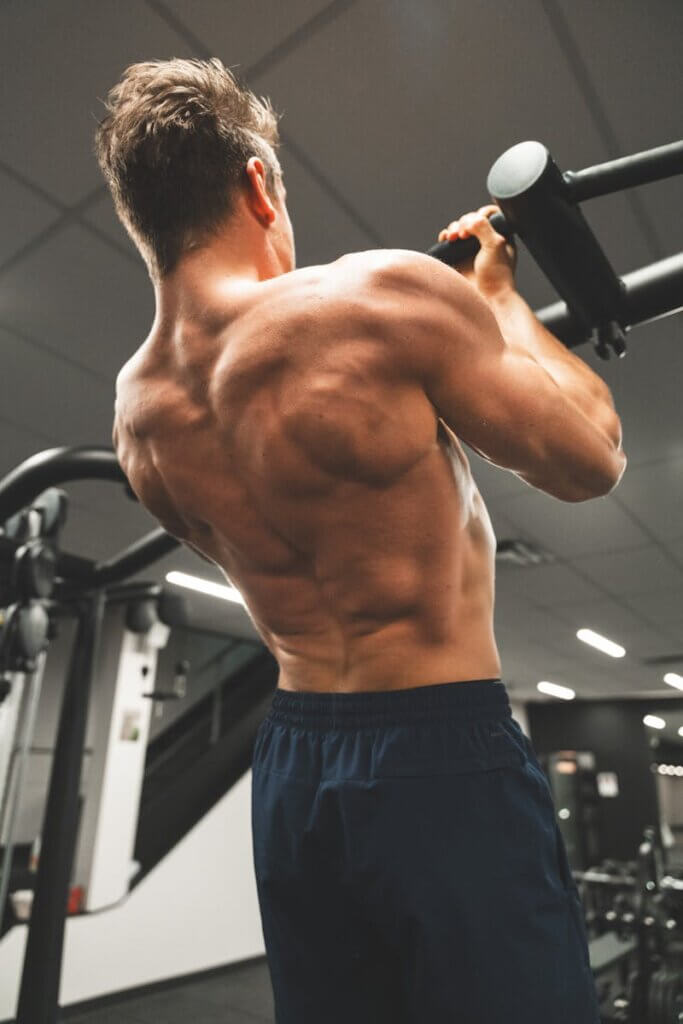How to do Reverse Grip Pull Ups

Introduction:
Reverse grip pull-ups (also known as Chin ups) are a dynamic upper body exercise that targets the muscles of the back, biceps, and forearms. Unlike traditional pull-ups, where the palms face away from the body, reverse grip pull-ups involve gripping the bar with an underhand grip, palms facing towards you. This subtle change in hand position places greater emphasis on the biceps and lower lats, making it an effective exercise for building strength and muscle definition in the upper body. In this guide, we’ll explore the fundamentals of reverse grip pull-ups, providing step-by-step instructions, essential equipment, scaling options, common mistakes to avoid, and the numerous benefits of incorporating this exercise into your fitness routine.
Steps in the Reverse Grip Pull Up movement
- Grip: Stand beneath the pull-up bar and grasp it with an underhand grip, palms facing towards you and hands positioned slightly wider than shoulder-width apart.
- Hang: Hang from the bar with your arms fully extended and feet off the ground. Engage your core and maintain a straight body position from head to heels.
- Pull: Initiate the movement by pulling your chest towards the bar, driving your elbows down and back. Focus on squeezing your shoulder blades together at the top of the movement.
- Lower: Slowly lower yourself back to the starting position, fully extending your arms and allowing your shoulders to stretch at the bottom of the movement.
- Repeat: Continue the movement, pulling yourself up and lowering with control for the desired number of repetitions.
What Equipment is needed
- Pull-up bar: A sturdy, anchored pull-up bar is essential for performing reverse grip pull-ups. Choose a bar that allows for a comfortable grip width and is tall enough to allow full range of motion.
- Grips
- Chalk
- Resistance bands
Recommended Equipment for Optimal Performance
Investing in quality equipment can enhance performance and safety during reverse grip pull-ups. A sturdy pull-up bar is essential; options range from doorway-mounted bars to wall or ceiling-mounted systems. Ensure the bar can support your body weight and offers sufficient clearance for full range of motion. Gymnastics grips or gloves can protect your hands and improve grip, especially during high-repetition sets. Resistance bands of varying thicknesses are valuable tools for assistance during the learning phase and can be used to add resistance as strength increases. Chalk can be beneficial for maintaining a secure grip by reducing moisture on the hands. For those setting up a home gym, considering a multi-grip pull-up bar can provide versatility, allowing for various hand positions to target different muscle groups. Investing in a quality pull-up bar not only ensures safety but also enhances the effectiveness of your workouts, providing a reliable platform to perform reverse grip pull-ups and other upper body exercises.
Check out the Equipment subsite for more tools, tips, and inspiration.

Shop Fitness gear now on Amazon
See Amazons extensive range of workout gear here. (Affiliate Link)
Scaling Options:
To gradually build strength and proficiency, consider the following scaling options:
- Resistance bands: Loop a resistance band around the pull-up bar and place one foot or knee in the band to provide assistance with the pull-up motion.
- Negatives: Start at the top of the pull-up position and slowly lower yourself down, focusing on controlling the descent to build strength.
- Assisted pull-up machine: Use an assisted pull-up machine that counterbalances your body weight, making it easier to perform reverse grip pull-ups.
Common Mistakes to Avoid:
- Swinging: Maintain a controlled and stable body position throughout the movement, avoiding swinging or kipping to generate momentum.
- Incomplete range of motion: Ensure you fully extend your arms at the bottom of each repetition and pull your chest all the way to the bar at the top to maximize muscle activation.
- Overgripping: Avoid gripping the bar too tightly, as this can lead to premature fatigue and decreased performance. Maintain a firm but relaxed grip throughout the exercise.
Benefits of the Movement:
- Targets the back and biceps: Emphasizes the muscles of the upper back, lower lats, and biceps, helping to build strength and muscle definition in these areas.
- Improves grip strength: Requires a strong grip to hold onto the bar with an underhand grip, leading to improvements in grip strength and forearm endurance.
- Enhances overall upper body strength: Engages multiple muscle groups simultaneously, including the back, arms, and core, for a comprehensive upper body workout.

Which Muscles Are Worked:
During this exercise, the following muscle groups are engaged:
- Primary Muscles: Latissimus dorsi, biceps, lower lats
- Secondary Muscles: Forearms, shoulders, core
Anatomy of Muscles Engaged
Understanding the specific muscles activated during reverse grip pull-ups can provide valuable insight into the exercise’s benefits and help in targeting training goals. This movement primarily engages the latissimus dorsi, which spans the middle and lower back, contributing to back width and overall upper body strength. The biceps brachii, located on the front of the upper arm, are significantly involved due to the underhand grip, facilitating elbow flexion during the pull. Additionally, the brachialis, situated beneath the biceps, is activated, enhancing arm mass and strength. The rhomboids and trapezius muscles in the upper back work to retract and stabilize the shoulder blades, promoting proper posture and shoulder health. Forearm muscles, including the brachioradialis, are also engaged to maintain grip strength throughout the movement. A strong core is essential to stabilize the body, involving the rectus abdominis and obliques. By comprehending the roles of these muscles, individuals can better appreciate the comprehensive upper body development that reverse grip pull-ups offer and can focus on mind-muscle connection to maximize effectiveness.
Alternative Similar Movements:
If you’re seeking variation or targeting specific muscle groups, consider incorporating these alternative exercises:
- Pull Ups
- Kipping Pull Ups
- Butterfly Pull Ups
- Hammer grip pull-ups
- Bicep curls

Shop Fitness gear now on Amazon
See Amazons extensive range of workout gear here. (Affiliate Link)
Progressive Training Plan for Beginners
For individuals new to reverse grip pull-ups, a structured progression plan can facilitate safe and effective development of the necessary strength and technique. Begin with isometric holds, where you use a box or bench to position yourself with your chin above the bar, holding this position for as long as possible to build initial strength. Incorporate negative pull-ups by starting at the top position and slowly lowering yourself in a controlled manner, focusing on elongating the muscles under tension. Assisted pull-ups using resistance bands can provide support; loop a band over the bar and place your knee or foot in it to reduce the load. Gradually decrease the band’s assistance as strength improves. Supplement your routine with strength-building exercises such as seated rows, lat pull-downs, and bicep curls to target the involved muscle groups. Aim for two to three sessions per week, allowing adequate rest between workouts. As proficiency increases, attempt unassisted pull-ups, starting with low repetitions and progressively increasing as strength and endurance develop. Consistency and patience are key; celebrate incremental progress and remain committed to the process.
Importance of Grip Variations and Their Impact
Exploring different grip variations in pull-ups can target muscles uniquely and prevent training plateaus. The reverse grip, or supinated grip, emphasizes the biceps and lower portion of the lats, offering a distinct advantage in arm development. In contrast, the pronated (overhand) grip in traditional pull-ups places greater emphasis on the upper lats and teres major, contributing to back width. Neutral grip pull-ups, where palms face each other, provide a balanced engagement of both back and arm muscles and are often more comfortable for individuals with shoulder concerns. Incorporating a variety of grips can lead to more balanced muscle development and reduce the risk of overuse injuries by varying the stress placed on specific muscle groups and joints. It’s advisable to rotate grips periodically within your training program, ensuring comprehensive upper body strength and preventing adaptation. Listening to your body and adjusting grips to accommodate comfort and any pre-existing conditions will promote longevity in your training.
Integrating Reverse Grip Pull-Ups into a Balanced Workout Routine
To maximize the benefits of reverse grip pull-ups, it’s important to integrate them into a well-rounded fitness regimen. Begin your workout with a thorough warm-up, including dynamic stretches and mobility exercises to prepare the muscles and joints. Incorporate reverse grip pull-ups early in your session when energy levels are highest, aiming for three to four sets of manageable repetitions, focusing on form and control. Pair this exercise with complementary movements such as push-ups or bench presses to balance anterior and posterior muscle development. Including core strengthening exercises like planks or hanging leg raises can further enhance stability and performance. Ensure adequate rest between sets to maintain performance quality. On non-training days, consider active recovery activities such as light cardio or yoga to promote muscle recovery and flexibility. Listening to your body and allowing sufficient rest between sessions targeting the same muscle groups is crucial to prevent overtraining. By thoughtfully incorporating reverse grip pull-ups into a comprehensive workout plan, you can achieve balanced muscle development, improved strength, and overall fitness progression.
Q&A for reverse grip pull ups
What do reverse grip pull-ups target?
Reverse grip pull-ups primarily target the biceps and lower lats, providing a unique angle that emphasizes these muscles more than traditional pull-ups.
How do you train reverse grip?
Start by practicing with resistance bands for assistance, and gradually build strength with negatives. Focus on controlled, slow movements to master the technique.
Why are reverse pull-ups easier?
Reverse pull-ups can be easier because the underhand grip allows for more bicep engagement, which is often stronger than the back muscles alone.
How to do reverse grip push-ups?
Reverse grip push-ups are done by placing your hands on the floor with fingers pointing towards your feet, which targets the forearms and wrists differently.
Which pull-up grip is hardest?
The wide-grip pull-up is often considered the hardest because it isolates the lats more and reduces bicep involvement, making the movement more challenging.
How to do reverse grip pull-ups?
Follow the step-by-step guide provided above to master the reverse grip pull-up, focusing on grip, hang, pull, and controlled lowering.
Is 10 pull-ups good?
Yes, being able to perform 10 pull-ups is an excellent indicator of upper body strength and endurance. It’s a commendable milestone for most fitness enthusiasts.
What is the healthiest pull-up grip?
A shoulder-width, neutral grip is often considered the healthiest as it places less strain on the wrists and shoulders while still effectively working the back and biceps.
How many pull-ups is average?
The average number of pull-ups can vary widely, but generally, being able to perform 5-10 pull-ups is a solid achievement for most people.
What is the reverse grip technique?
The reverse grip technique involves grasping the pull-up bar with an underhand grip, palms facing towards you, to target the biceps and lower lats more directly.
Is reverse grip better for lats?
Reverse grip pull-ups can effectively target the lower portion of the lats, but for overall lat development, a variety of grips should be used.
What are the advantages of reverse grip?
Reverse grip pull-ups emphasize the biceps and lower lats, enhance grip strength, and can be easier on the shoulders for some individuals compared to overhand pull-ups.
How do you do reverse grip strengthening?
Incorporate exercises like reverse grip rows, bicep curls, and negatives to build strength. Consistency and proper form are key.
Are reverse-grip pull-ups good?
Yes, reverse grip pull-ups are an excellent exercise for targeting the biceps and lower lats, adding variety to your upper body workouts.
Which pull-up is best for lats?
Wide-grip pull-ups are often considered best for targeting the lats because they isolate these muscles more effectively than other variations.
How to get giant lats?
To build giant lats, incorporate a variety of pull-up grips, lat pulldowns, and rows into your routine, ensuring progressive overload and adequate nutrition.
Do lats grow fast?
Lat growth depends on genetics, training intensity, and consistency. While some individuals may see faster gains, it’s essential to maintain a well-rounded and persistent training approach.
Will pull-ups build a big back?
Yes, pull-ups are one of the best exercises for building a strong and muscular back, engaging multiple upper body muscles and promoting overall development.
Conclusion:
Incorporate reverse grip pull-ups into your training routine to unlock your back strength and take your fitness to new heights. With proper technique and consistency, you’ll build a powerful and defined upper body that will support you in all your athletic endeavors. So, grab that pull-up bar, embrace the challenge, and let the gains begin!

Shop Fitness gear now on Amazon
See Amazons extensive range of workout gear here. (Affiliate Link)

🏋️ Written by: Mike Kerr
Mike is the founder of Strengthguides.com and a certified CrossFit Level 1 Trainer (CF-L1) and certified Kettlebell Instructor with over 10 years of experience in functional fitness. He specializes in developing programs that maximize performance without sacrificing mobility. Mike Kerr is passionate about making complex training methodologies comprehensible and safe for everyone.
